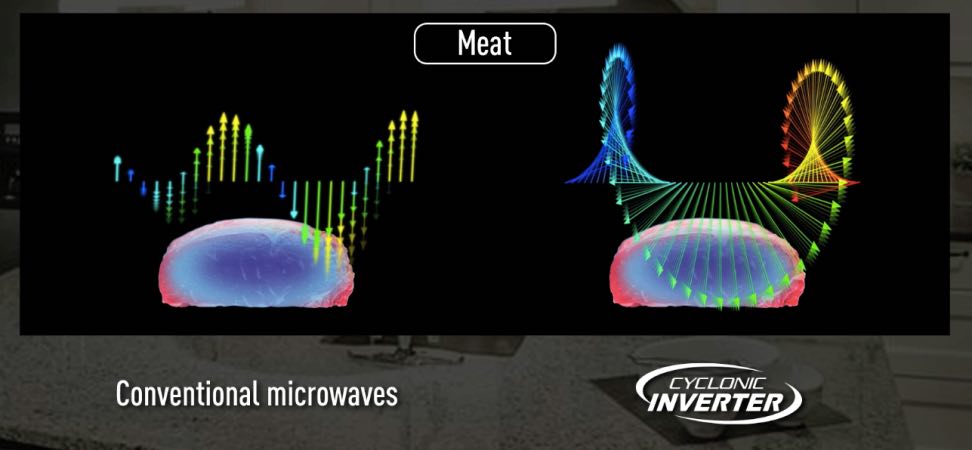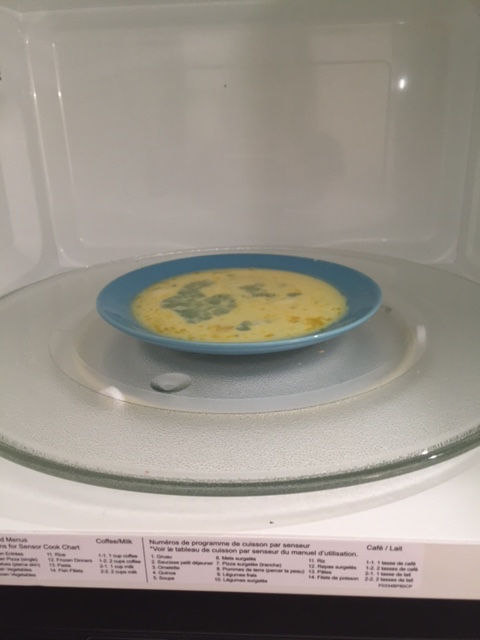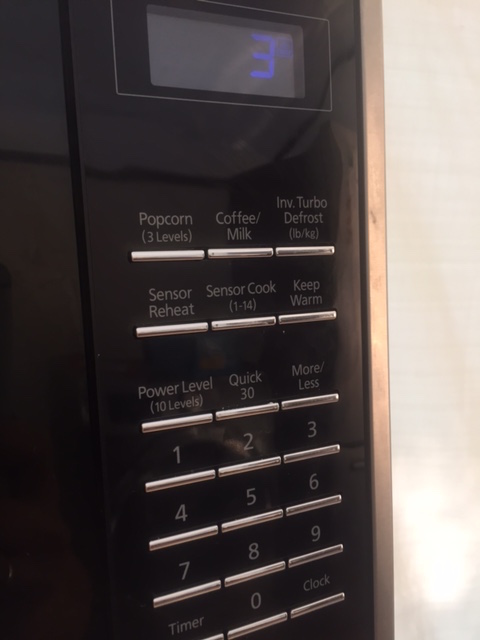 Not all microwaves are created equal. I know this because I’ve had at least 5 different microwaves since I bought my first home 16 years ago, and for the first 5 years, every time one went down, I picked a new one up and hoped for the best.
Not all microwaves are created equal. I know this because I’ve had at least 5 different microwaves since I bought my first home 16 years ago, and for the first 5 years, every time one went down, I picked a new one up and hoped for the best.
Then I got a little older, a little wiser, and I realized if I wanted a microwave for the long haul and for multi-use, I had to invest a few dollars and get one that would stand the test of time. The last microwave I had before I moved out of my house was a stainless steel Panasonic model that went the distance for 10 years and is, to the best of my knowledge, still running to this day.
Because I’ve already used a Panasonic for a long time, and the microwave I bought for my new house was a different brand, I was excited to try out the latest Panasonic model, the Panasonic 2.2 Genius Prestige Plus.
With high expectations, I plugged in the Panasonic Genius Prestige Plus and tested it out for an entire week, running it side by side against my new microwave.
Here’s what I discovered about the Panasonic Genius Prestige Plus.
Appearance
When I first pulled the Panasonic Genius Prestige Plus out of the box, I instantly noted two things: one, it was very heavy, and two, the appearance was very simple. It has a basic front panel and is black with stainless steel sides.
The interior of the microwave is quite roomy, and as I’ve only ever had a microwave that was 2.0 Cu. Ft., I was impressed with the size of the interior. It would easily fit one of my glass casserole dishes with room to spare. It also uses an energy efficient LED that should last forever, unlike microwave oven bulbs that go out and are very hard to replace.

Specifications
I read up on the 1200 watt Panasonic Genius Prestige Plus before I tried it out, so I knew that it is powered by new tech—Cyclonic Inverter Technology.
The difference between Cyclonic Inverter Technology and a standard microwave comes down to how the rays hit your food. A standard microwave has rays that run straight up and down, so sometimes the corners of your food don’t cooked or you get spots that are extra crispy.
The Panasonic Genius Prestige Plus’ Cyclonic Inverter Technology has rays that follow a circular pattern, so they surround your food, and I read one website that described it as a tornado on its side. The result is that more rays hit your food, and you don’t get all of the side effects of overcooking.
On the front panel of the Panasonic Genius Prestige Plus are several buttons. As I’ve mentioned, I’ve had quite a few microwaves in my time, but I’ve never seen a few of these buttons on any of the other models I’ve tried. Along with the standard popcorn button, there is a Coffee/Milk, Inv.Turbo Defrost, and a Keep Warm button.
There are also Sensor buttons including Sensor Reheat and Sensor Cook. Both of these buttons come in handy because you never have to set a time for cooking or reheating, you just hit the button and the Panasonic Genius does the rest.
 Putting the Panasonic Genius Prestige Plus to the test
Putting the Panasonic Genius Prestige Plus to the test
The obvious place to start when testing out a microwave is to reheat something, and coffee is a good place to begin. I always buy a Venti at Starbucks and before I can drink it all, it goes cold on me.
On my own microwave I have set the reheat for one minute and ended up with a scalding cup of coffee that I couldn’t drink for another 5 minutes, at which point I’d forget about it and then have to start all over again. Hitting the 30-second button resulted in it being lukewarm, so I finally had to tweak until I found the magic number of seconds to reheat the coffee.
With the Panasonic Genius Prestige Plus, I didn’t have to do anything other than hit the coffee/milk button. Push it once and it reheats one cup of coffee, push it twice for two cups. Just for this feature, I would buy this microwave, because the coffee came out perfectly hot without scalding me.
Next up, I wanted to try the Sensor Cook feature, and I decided making an omelet was the best way to see how Cyclonic Inverter Technology worked differently than standard microwaves. I can’t remember how many times I’ve heard of people trying to cook eggs decently in a microwave, but they always have one of those microwave safe plates you can pick up at a home store to instantly poach eggs or make the perfect omelet. I’d never heard of anyone actually making omelets on a plate like it says you can in the Panasonic Genius Prestige Plus recipe booklet, so I had to try it in both the Panasonic and my other microwave.
 First I scrambled the eggs, added a dash of milk, poured it on a microwave safe plate, and then hit the Sensor Cook button. I watched over it and stopped it half way, just to see how it was cooking, and here is where I saw Cyclonic Inverter Technology at work in the Panasonic microwave.
First I scrambled the eggs, added a dash of milk, poured it on a microwave safe plate, and then hit the Sensor Cook button. I watched over it and stopped it half way, just to see how it was cooking, and here is where I saw Cyclonic Inverter Technology at work in the Panasonic microwave.
In the Panasonic, the omelet cooked from the outside all the way in. When I stopped it half way through the sensor cycle, I could see that it still had the center of the omelet to finish. I started it back up and it cooked the omelet evenly all the way through on its own. I didn’t have to turn it off and on, just let it go and it cooked a perfect omelet.
In my own microwave, I followed the same procedure with the eggs and microwave plate. Setting it for 1 minute, I checked to see how it was cooking.
In my microwave, I could tell it was cooking in what I can only describe as stripes, so it was cooked in one spot, then another, and another. I let it go for another minute just to see if it would finish, but it was an uneven mess when I pulled it out.
 I think the egg test was the perfect way to see just why the Panasonic Genius Prestige Plus is heads and shoulders above any other microwave. A lot of people don’t cook food in a microwave because you’re never quite sure how it will turn out, but the Panasonic Genius Prestige Plus ensured even cooking for everything I tried.
I think the egg test was the perfect way to see just why the Panasonic Genius Prestige Plus is heads and shoulders above any other microwave. A lot of people don’t cook food in a microwave because you’re never quite sure how it will turn out, but the Panasonic Genius Prestige Plus ensured even cooking for everything I tried.
It also ensures even reheating, and Sensor Defrost was actually my favourite option on this microwave. You know how you put something in a microwave and hit auto defrost, only to pull out a hot, crispy-edged loaf of bread that’s still cool in the center? That won’t happen on the Panasonic Genius Prestige Plus.
I put in everything from a fully frozen loaf of bread, a pound of ground beef, and one of my kid’s favourite waffles and hit the Sensor Defrost. Each came out perfectly when I opened the door, no extra steps required.
The Panasonic Genius Prestige Plus also has some other cool features—you can steam towels in it by adding a wet towel and turning on Sensor Cook. There are different options on the popcorn button so you can choose which size of bag you’re cooking. It also steams a bag of vegetables perfectly and when I did a bag of fresh broccoli it was literally bursting with flavour, with no watery after taste you sometimes get when you cook in a microwave.
Clean Up
Because it has a very simple style to it, you can just wipe down the front and sides of the Panasonic Genius Prestige Plus and it comes clean. The stainless steel on the sides is finger print proof, so you don’t get any of the smudging you can get on other stainless steel appliances.
Evaluation
I used the Panasonic Genius Prestige Plus for an entire week, and although I didn’t cook a big meal in it, I know after using it that it’s head and shoulders above any other microwave I’ve ever had. Just for the Sensor Cooking and Sensor Defrost alone, I’d put my money on this microwave any day.
You can find the Panasonic Genius Prestige Plus right now on Bestbuy.ca.




With the feature such as inverter technology in Panasonic microwave, it has become really very easy to cook even foods. Because Inverter Technology is very helpful to spread the waves evenly.
Comments are closed.